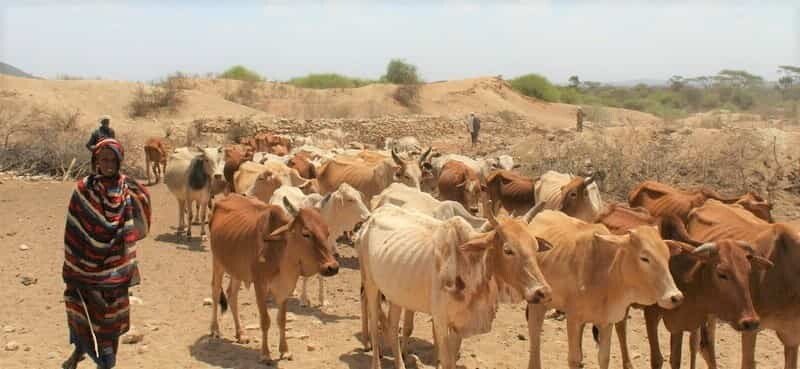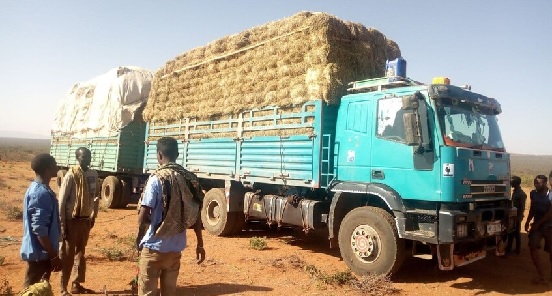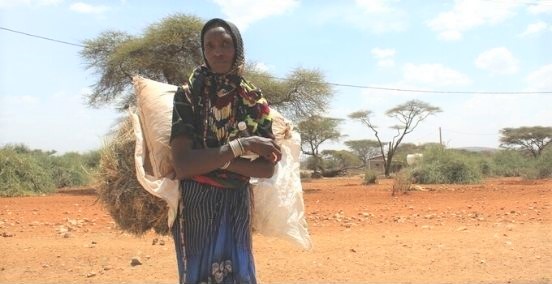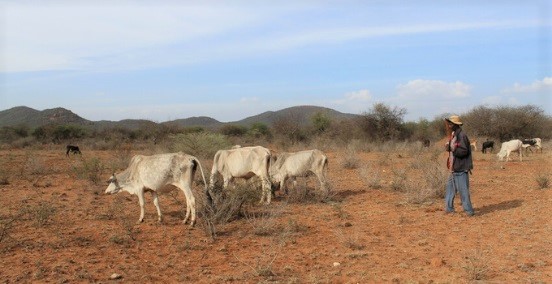May 03, 2022
Millions of people across eastern Africa are facing a severe hunger crisis as an ongoing drought causes the driest conditions seen in decades and worsens widespread food shortages.

A drought of this magnitude has not been seen since 1981.
Anastasia Mbatia, Senior Technical Manager for Agriculture
A back-to-back drought has hit the Horn of Africa due to poor rainfall since October 2020, continuing with an acutely dry 2021 and according to international and regional forecasts, a below-average March to May 2022 rainy season.
Most arid and semi-arid areas of Kenya are forecast to receive only 60-75 percent of normal rainfall, with even deeper deficits of less than 60 percent of average rains predicted in pastoral areas of north-eastern Kenya.
The southern and eastern pastoral areas of Ethiopia, north and eastern parts of Kenya and a large part of south-central Somalia are the worse affected areas, with over 30 million people needing urgent humanitarian food assistance.
The deterioration in condition and deaths of many livestock, water shortages and record-low vegetation conditions are just some of the results of this devastating drought, which is leading to mass hunger, displacement and diverse economic shocks such as rising fuel prices, currency depreciation and inflation.
Despite recent enhanced rains over parts of Ethiopia, dryness is persisting, with other East African countries yet to receive any rainfall. As forecasts for the upcoming weeks indicate a continuation of drier conditions, food security will be extremely compromised until at least August and we are unlikely to see any positive impacts until much later in the year
Compounding issues
In a region that has already endured flooding in early 2020, a desert locust invasion, the COVID-19 pandemic and conflict in northern Ethiopia, the current drought poses severe threats to weakened farming communities who call this region home.
Staple food prices remain atypically high, driven by below-average production across the region. High food prices are reducing household purchasing power and limiting household food access.
Anastasia Mbatia, Senior Technical Manager for Agriculture at Farm Africa, said: “The crisis puts at risk communities who are still reeling from the extreme challenges thrown their way by the desert locust invasion, the pandemic and conflict.”
“Yet again, we are witnessing how the burden of climate change is borne the most by those globally who have done the least to contribute to it.”
The region is now also feeling the impact of the Russia Ukraine conflict through a spike in agricultural commodity prices.
Together, the Russian Federation and Ukraine produce 53 per cent of sunflower oil and seeds, and 27 per cent of wheat traded globally.[i] Countries in eastern Africa are particularly dependent on the import of food security foods: Kenya sources more than 40% of its wheat from the Russian Federation and Ukraine, while in Uganda the figure is more than 50% and in Tanzania it is over 60%.[ii]
Action is needed to avert threats to food security across eastern Africa.
How Farm Africa is helping
In the Borena zone in the Oromia National Regional State of Ethiopia, where the drought has dried up pasture and livestock are suffering from acute shortages of water and land, Farm Africa and SOS Sahel Ethiopia are on the ground delivering emergency supplies of animal forage, thanks to funding from the Royal Norwegian Embassy in Ethiopia, in the hope to save livestock.







The root of the problem is population continues exploding while sustenance resources are getting smaller and scarier. As long us the citizens remain indifferent to or totally oblivious about this fact such calamity will take place unabated letting nature does it’s own tragic corrections. Before that conflicts will do their part in their deadly number games before they nature steps in to carry out its correction with the head count. This reckless population explosion has to be brought under control while economic development goes in full swing. Even all these countries are able to create a million good paying jobs every year that will not be sufficient to the 5-6 million new ‘feed me’ arrivals. A way of life that follows the tails of goats, cows and camels can not be sustained. You think you have seen enough bloody conflicts over grazing rights now but wait until the population of that country hits 200 or 250 million. This population thing has shown its ugly face already. Everyone needs to shape up!!!